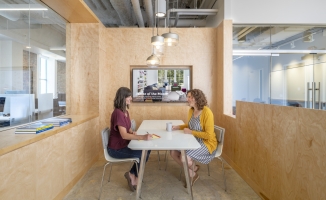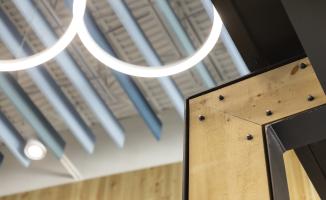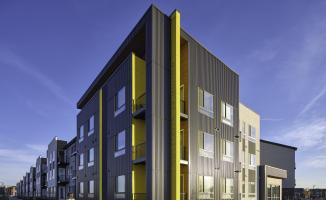Designing with Empathy: Reflections On The 48th Annual Forensic Mental Health Association of California Conference
Designing with Empathy: Reflections On The 48th Annual Forensic Mental Health Association of California Conference
Author: Scott Bales, AIA, EDAC, LEED Green Associate
As designers with an ongoing mission to support mental health well-being for all, our profession cannot ignore some of the most vulnerable and overlooked populations — those living with behavioral and mental health conditions and their caretakers.
While avoiding defining individuals by their conditions, it is important to focus on how design decisions impact those affected by such conditions. Appropriate design of behavioral health facilities necessitates the involvement of end-users, both those living and working in the facilities.
The best way for designers to establish this more thoughtful, involved approach as the new paradigm is to seek out spaces where the conversation around behavioral and mental health does not typically include a designer’s perspective. Designers are a critical piece of the puzzle—we have an obligation to leverage our expertise and push for change.
One of these spaces is the Forensic Mental Health Association of California (FMHAC), an organization that supports professionals in the forensic mental health field with the ultimate goal of establishing first-rate evaluation and treatment of mentally ill offenders through quality education and training. Despite including a wide variety of forensic mental health workers, including correctional officers, social workers, mental health workers, psychologists, the organization generally does not feature designers.

Joining the Conversation
I recently joined Ever Well Health, an integrated healthcare system growing the next generation of treatment communities for those with significant mental, emotional, or substance use issues, at the FMHAC’s Annual Conference in San Diego. As the conference’s only architect, I joined this small but dedicated group of decision-makers to participate in a larger conversation about how design decisions may impact the justice-involved population living with behavioral and mental health conditions. Specifically, I participated in the conference’s “Words to Deeds” presentation tract, which focuses on specific strategies to turn talk into action when it comes to treating mentally ill offenders.
Too often, those working in the forensic mental health field aren’t afforded the tools or resources to participate in the design of their physical infrastructure. Thus for Cuningham, “words to deeds” means utilizing our healthcare design expertise to support this overlooked population through the lens of behavioral health design.
Engaging with organizations like FMHAC allows us to receive real-world feedback from stakeholders that help us determine how design can best support treatment trends and therapies.
Our collaborator, Ever Well Health, shares our belief that the design of the built environment dramatically affects the outcomes of individuals living with behavioral and mental health conditions.

Specific Design Strategies
Access for All: Critical Design Considerations for Behavioral Health-Focused Senior Housing Communities, co-written with my colleague Amy Cheever, investigates the direct negative impact of a home designed without consideration for the lived experience of residents with behavioral and mental health conditions, as well as specific design strategies for behavioral health-focused communities–including flexible lighting, soft acoustics, and dedicated spaces for staff to decompress.
To join the conversation on behavioral and mental health focused design strategies, connect with Scott below.





